UNIT 1.6
THEORY OF THE FIRM
EQUILIBRIUM OF THE FIRM UNDER PEFECT COMPETITION
MEANING OF EQUILIBRIUM:
A firm is said to be in equilibrium when it does not intend to change the volume of output which it is producing or a firm is in equilibrium at an output level where it is earning maximum profit or bearing minimum losses under given conditions.
SHORT RUN:
Short run can be defined as time period in which a firm can only change the volume of its output by changing the variable factors of production. Further, the short run is a time in which new firms cannot enter into and existing firms cannot leave the industry. Thus the number of firms in an industry is given and fixed in the short run.
PERFECT COMPETITION.
Perfect competition is a market situation that is a result of five conditions (1) Large number of buyers and sellers. (2) Homogeneous product. (3) Perfect knowledge of the market (4) free entry and exit (5) perfect factor mobility.
The result of these conditions is the existence of uniform price for the product in the entire market.
CONDITIONS EQUILIBRIUM OF A FIRM:
Equilibrium of a firm takes place at a point where following two conditions are satisfied.
(1) MC is equal to MR
(2) MC curve cuts MR curve from below.
As the price in perfect market is given and fixed, the Average revenue curve (AR) becomes a straight line parallel to X_axis at a distance which is equal to the price of the commodity. As price is given and constant Marginal revenue (MR) of the firm is equal to average revenue and MR curve of a firm will also at the same place at which average revenue curve is lying.
The average cost curve of the firm is U-shaped and marginal cost curve is also a U-shaped curve, it lies below the average cost curve so long as the average cost is falling. And when the average cost is rising it lies above it. It intersects average cost curve from below at its minimum level. Following diagram can be used to explain equilibrium of a firm.
|
|
In this diagram the equilibrium of the firm is at point E where MC curve cuts MR curve from below. At point 'E' firm produces Q1 units of commodity. Any increase in production leads to more marginal cost than MR and any level of output less than OQ1 reduces the profit of the firm. Therefore firm is in equilibrium at point E.
MC is also equal to MR at point 'F' but this does not show the equilibrium of the firm because after this point further production of the firm reduces its MC while MR is unchanged therefore firm can increase its profits by increasing output.
The profit and loss of a firm is determined by AR and AC. Under perfect competition in the short run a firm may be facing one of the following situations.
(1) FIRMS IS EARNING
When a firm is earning normal profits its AR is equal to AC.
This is because as the AC includes the normal profit of the entrepreneur.
|
| In this diagram Equilibrium of the firm is at 'E' Where MC=MR At equilibrium firm is producing OQe amount of commodity. At the point of equilibrium AC is also equal to AR and because AC includes normal profit of the firm, therefore firm is earning normal profit at the equilibrium |
(2) FIRM IS EARNING ABNORMAL PROFIT.
If a firm is earning abnormal profits then at the point of equilibrium AR must be greater than the AC.
| | In this diagram the firm is in equilibrium at point E. At equilibrium the average cost of the firm is FQe while average revenue of the firm is EQe, thus firm earns FE per unit abnormal profit and CPEF total abnormal profit. |
(3) FIRMS IS BEARING LOSSES.
A firm bear losses at equilibrium when AC > AR.
|
| In this diagram Equilibrium of the firm is at 'E' Where MC=MR At equilibrium firm is producing OQe amount of commodity. At the point of equilibrium AC is equal to FQe while Average revenue is equal to EQe therefore firm bears per unit loss equal to EF, and total loss equal to PCFE. |
LONG RUN EQUILIBRIUM OF A FIRM UNDER PERFECT COMPETITION
MEANING OF EQUILIBRIUM:
The equilibrium of a firm can be defined in the following words.
“A firm is in equilibrium at an output level where it earns maximum profit or bears minimum loss under given conditions of cost and revenue.”
In other words a firm is said to be in equilibrium when it does not intend to change the volume of output which it is producing.
LONG RUN:
Long run can be defined as a time period in which a firm can change the volume of its output by changing the variable as well as fixed factors of production. In other words, the long run is a time in which new firms can enter into the industry and existing firms can leave the industry. Thus the number of firms in an industry is not fixed and can change in the long run.
PERFECT COMPETITION:
Perfect competition is a market situation that is a result of five conditions.
(1) Large number of buyers and sellers.
(2) Homogeneous product. (3) Perfect knowledge of the market (4) free entry and exit (5) perfect factor mobility.
If these conditions are satisfied in a market then it becomes a perfect market and a uniform price for the same product prevails in the entire market.
CONDITIONS EQUILIBRIUM OF A FIRM:
Equilibrium of a firm is at a point where following two conditions are satisfied.
(1) MC is equal to MR
(2) MC curve cuts MR curve from below.
The first condition is called necessary condition and second is known as sufficient condition of equilibrium.
Under perfect competition the Average revenue curve (AR) and marginal revenue curve (MR) lie on each other and are a straight line parallel to x-axis at a distance which is equal to the price of the commodity.
The marginal cost curve (MC) is a U-shaped curve.
Following diagram can be used to explain equilibrium of a firm.
|
|
In this diagram the equilibrium of the firm is at point E where MC curve cuts MR curve from below. At point 'E' firm produces Q1 units of commodity. Any increase in production leads to more marginal cost than MR and any level of output less than Q1 reduces the profit of the firm. Therefore firm is in equilibrium at point E.
MC is also equal to MR at point 'F' but this does not show the equilibrium of the firm because at this point both the conditions of equilibrium are not satisfied. Under perfect competition in the long run a firm only earns normal profit. This is explained as under
NORMAL PROFIT.
When a firm earns normal profits then following condition is satisfied at equilibrium. Average revenue of the firm is equal to average cost. i.e. AR = AC at equilibrium
A firm earns normal profit because the cost of production includes the normal profit of the firm. This is explained as under.
|
|
In this diagram Equilibrium of the firm is at 'E' Where MC=MR At equilibrium firm is producing Qe amount of commodity. At the point of equilibrium AC is also equal to AR and because AC includes normal profit of the firm, therefore firm is earning normal profit at the equilibrium. Under perfect competition in long run a firm always earns normal profit.
Why A Firm Always Earns
Long run is a time period in which new firms can enter an industry and old firms can leave it. Therefore, in long run when existing firms are earning normal profit then seeing this abnormal profit, new firms enter the industry. Due to increase in number of firms the supply of the industry increases and as a result price of the commodity being produced by this industry falls. For this reason all abnormal profits are reduced to normal profits and normal profits are converted into losses. On the other hand the firms which are bearing losses in short run leave the industry in long run.
As a result of this coming in and going out of the firms in an industry continues and changes in market price takes place until all the firm in industry start earning normal profit
EQUILIBRIUM OF FIRM UNDER MONOPOLY
MONOPOLY:
Monopoly is a market situation in which there is only one seller of a particular product which has no near substitute. There is no other firm producing and selling the same or similar products and therefore there is no competition from anywhere. The buyers, therefore have to buy this product only from this particular seller or go without it. Being the sole supplier, the monopolist is thus in a position to fix up the price of his product to his own advantage.
EQUILIBRIUM OF THE FIRM UNDER MONOPOLY:
In determining his price policy, the monopolist has two possibilities before him. He may fix a particular price for his product while the quantity he will put on the market for sale will be determined by the conditions of demand. Or, he may fix the supply of the commodity and place this quantity on the market for what it will bring. Whichever of these two courses may be adopted by the monopolist, his aim is to get maximum net profit from his monopoly.
EQUILIBRIUM OF THE FIRM:
| A firm operating under monopoly is in equilibrium when these two conditions are satisfied. (1) MC = MR (2) MC curve cuts MR curve from below. In this diagram MR cuts MR from below at point E which represents the equilibrium of the monopoly firm and Q1 is equilibrium output of the monopolist | |
A firm may earn normal profit, abnormal profit or even bear losses in some cases. These situations are explained as under.
NORMAL PROFIT
|
| The diagram shows the situation in which monopolist earns normal profit only. A firms earns normal profit when at equilibrium output AR=AC. At equilibrium monopolist produces “OQe” quantity of the product and charges “OP” price which is equal to ”QeF” Average Revenue. The average cost of production is also "QeF" which is equal to “OP” and therefore monopolist earns Normal Profit.
|
ABNORMAL PROFIT
|
| The diagram on the left side shows the situation in which monopolist earns abnormal profit. A firms earns normal profit when at equilibrium output AR>AC. At equilibrium monopolist produces “OQe” quantity of the product and charges “OP” price which is equal to “QeF” Average revenue. The average cost of production is "QeG" which is less than AR and therefore monopolist earns per unit abnormal profit “FG” and total abnormal Profit equal to “CPFG”. |
A monopolist firm usually earns abnormal profits in the short as well as in the long run, and if it bears loss due to some reasons it is usually of temporary nature.
LIMITATIONS TO THE POWER OF MONOPOLY:
(1) There is the fear of the potential competition at very high price, and thus high
abnormal profits encourage new producers to come into the field and therefore position of the monopolist will be in danger.
(2) There is also the fear of the production of new substitutes.
(3) There is fear of intervention by the state. In the interest of the consumer state may
fix a maximum price for the product of the monopolist.
(4) The consumer may boycott the purchase of the article.
(5) The conditions of demand and supply also affect the power of the monopolist.
Due to these reasons a monopolist does not control the price absolutely.
MONOPOLISTIC COMPETITION
When a firm is operating under monopolistic competition then it has sufficient control over the price of its commodity and it tries to set a price for the commodity which maximizes its profit.
The revenue curves of a firm under monopolistic competition are also downward sloping as it can increase demand for its product by lowering the price of the product. But these curves are relatively flatter than the firm under monopoly because the elasticity of demand for the product of a firm in monopolistic competition is usually greater than 1. i.e. demand of the commodity changes more in proportion to changes in price.
CONDITIONS OF EQUILIBRIUM
Equilibrium of a firm takes place at a point where following two conditions are satisfied.
(1) MC is equal to MR
(2) MC curve cuts MR curve from below.
The Average and marginal revenue curve are downward sloping and marginal revenue curve lies below the average revenue.
The marginal cost curve of the firm is U-shaped.
EXPLANATION OF PRICE AND OUTPUT DETERMINATION
Following diagram can be used to explain the price and output determination of a firm under monopolistic competition.
|
|
In the diagram AR and MR are average and marginal revenue curves and MC is the marginal cost curve of the firm. The equilibrium of the firm is at point E, where both the conditions of equilibrium of firm are satisfied. i.e.
(1) MC = MR (2) MC curve cuts MR curve from below.
Therefore in this diagram “FQ1” or “OP” is the price set by the firm and “Q1” is its equilibrium output.
This shows equilibrium of the firm.
In short run a firm operating under monopolistic competition may be in equilibrium while earning normal profit or abnormal profit. It is also possible that firm is in equilibrium when it is bearing some losses. These different situations of equilibrium are explained as under.
NORMAL PROFIT
A firms earns normal profit when at equilibrium output level, its average revenue is equal to average cost of production i.e. AR=AC. The following diagram shows the situation in which a firm earns normal profit.
|
|
At equilibrium the firm in monopolistic competition produces “OQe” quantity of the product and charges “OP” price which is equal to ”QeF”, Average Revenue. The average cost of curve is just touching average revenue at point “F” and therefore average revenue is also "QeF" which is equal to “OP” and therefore the firm earns Normal Profit.
ABNORMAL PROFIT
A firms earns abnormal profit when at equilibrium output level, its average revenue is greater than average cost of production i.e. AR > AC.
The following diagram shows the situation in which a firm under monopolistic competition earns abnormal profit.
|
| At equilibrium the firm produces “OQe” quantity of the product and charges “OP” price which is equal to “QeF” . The average cost of production is "QeG" which is less than AR and therefore the firm earns abnormal Profit. Total Revenue = OPFQe Total Cost = OCGQe Total Profit = TR –TC which is equal to “PFGC”. |
LOSSES
A firms bears loss when at equilibrium following condition is satisfied. i.e AR <>
The following diagram shows the situation in which a firm under monopolistic competition bears loss.
|
| At equilibrium the firm produces “OQe” quantity of the product and charges “OP” price which is equal to “QeF” Average revenue. The average cost of production is "QeG" which is greater than “AR” and therefore the firm bears loss. Total Revenue = OPFQe Total Cost = OCGQe Total Loss = TR –TC which is equal to “PFGC”. Which is in fact negative profit |
OLIGOPOLY MODEL
Some of the important oligopoly models are the kinked demand curve model, cartel arrangements, and price leadership model. As we will see, each of "these models focuses on one particular aspect of oligopolistic interdependence but overlooks others.-As a result, they have limited applicability and are more or less unrealistic.
THE KINKED DEMAND CURVE MODEL
The kinked demand curve model was introduced by Paul Sweezy in 1939 in an attempt to explain the price rigidity that was often observed in many oligopolistic models. Sweezy postulated that if an oligopolist raised its price, it would lose most of its customers because other firms in the industry would not follow by, raising their prices. On the other hand, an oligopolist could not increase its share of the market by lowering its price because its competitors would quickly match price cuts. As a result, according to Sweezy, oligopolists face a demand-curve that has a kink (sharp bend) at the prevailing price and is highly elastic for price increases but much less elastic for price cuts. In this model, oligopolists recognize their interdependence but act without collusion in keeping their prices constant even in the face of changed cost and demand conditions—preferring instead to compete on the basis of quality, advertising, service, and other forms of non-price competition.
This model is explained in the following diagram
|
|
In Figure, the demand curve facing the oligopolist is AR=D and has kink at the prevailing price of P and quantity of Q0 units (point B). Note that D curve is much more elastic above the kink than below, on the assumption that competitors will not match price increases but quickly match price cuts. The marginal revenue curve is MR. The kink at point B On the demand curve causes continuity in the marginal revenue curve: The best level of output of the oligopolist is where
MC=MR and is given by point E1.
From Figure we can also see that the oligopolist's marginal cost curve can rise or fall anywhere within the discontinuous portion of the MR curve (i.e., from MC0 to MC2) without inducing the oligopolist to change the prevailing price of P0 and sales of Q0 units. Only if the MC curve shifts above the MC1 curve will the oligopolist be induced to increase its price and reduce quantity, or only if the MC curve shifts below MC2 will the oligopolist lower price and increase quantity. With a rightward or a leftward shift in the demand
When the kinked demand curve model was introduced nearly 60. years ago, it was hailed as a general theory of oligopoly. Subsequently, however two serious criticisms were raised against the model. First, Stigler found no evidence that oligopolists readily matched price cuts but not price increases, thus seriously questioning the existence of the kink. Thus, the model may be applicable only in a new industry and in the short run when firms have no clear idea as to how competitors might react to price changes. Even more serious is the criticism that while the kinked demand curve model can rationalize the existence of rigid prices, it cannot explain or predict at what price the kink will occurs.

